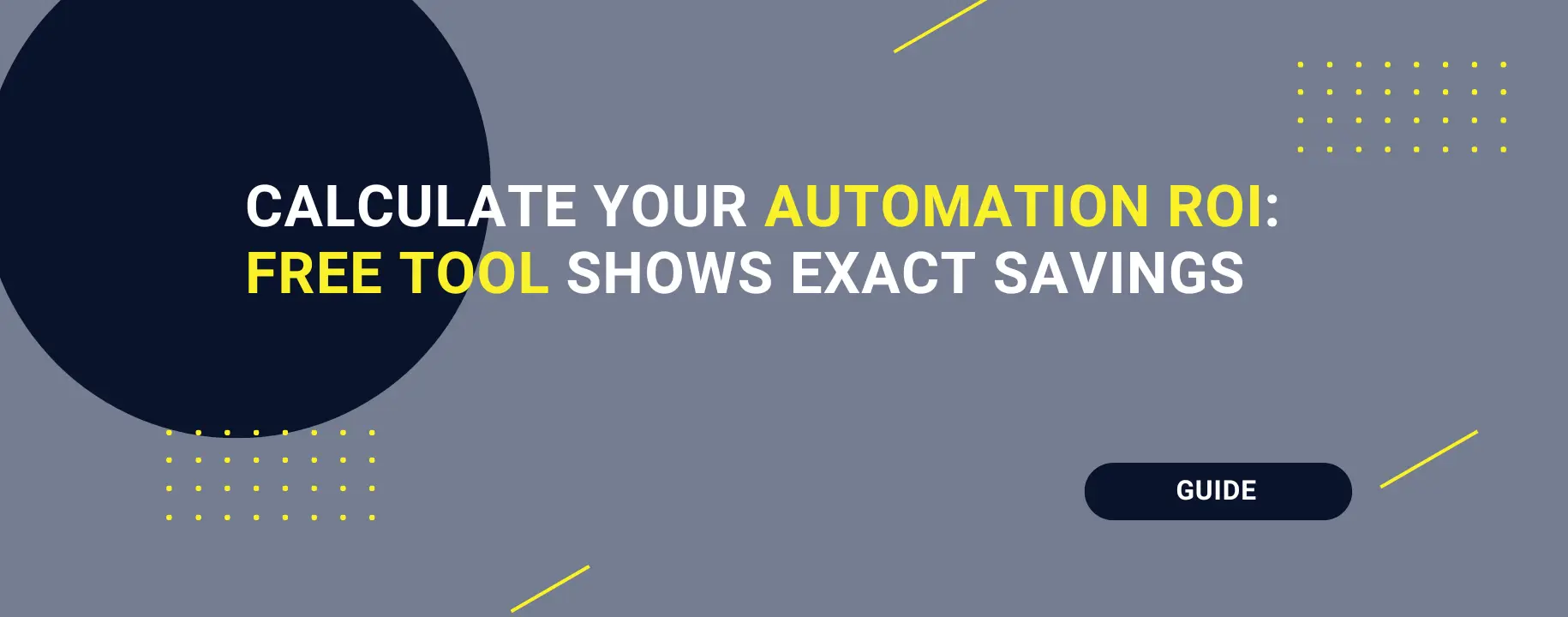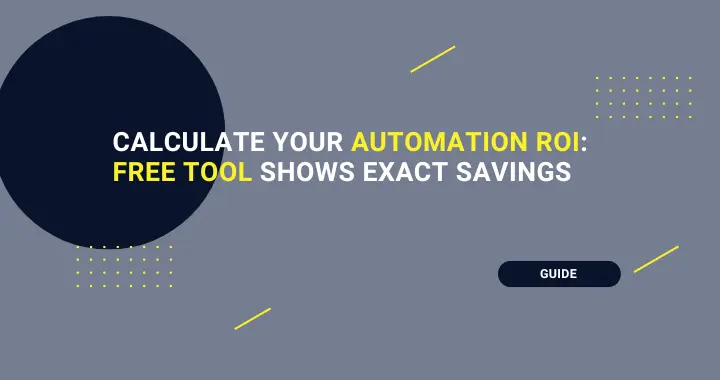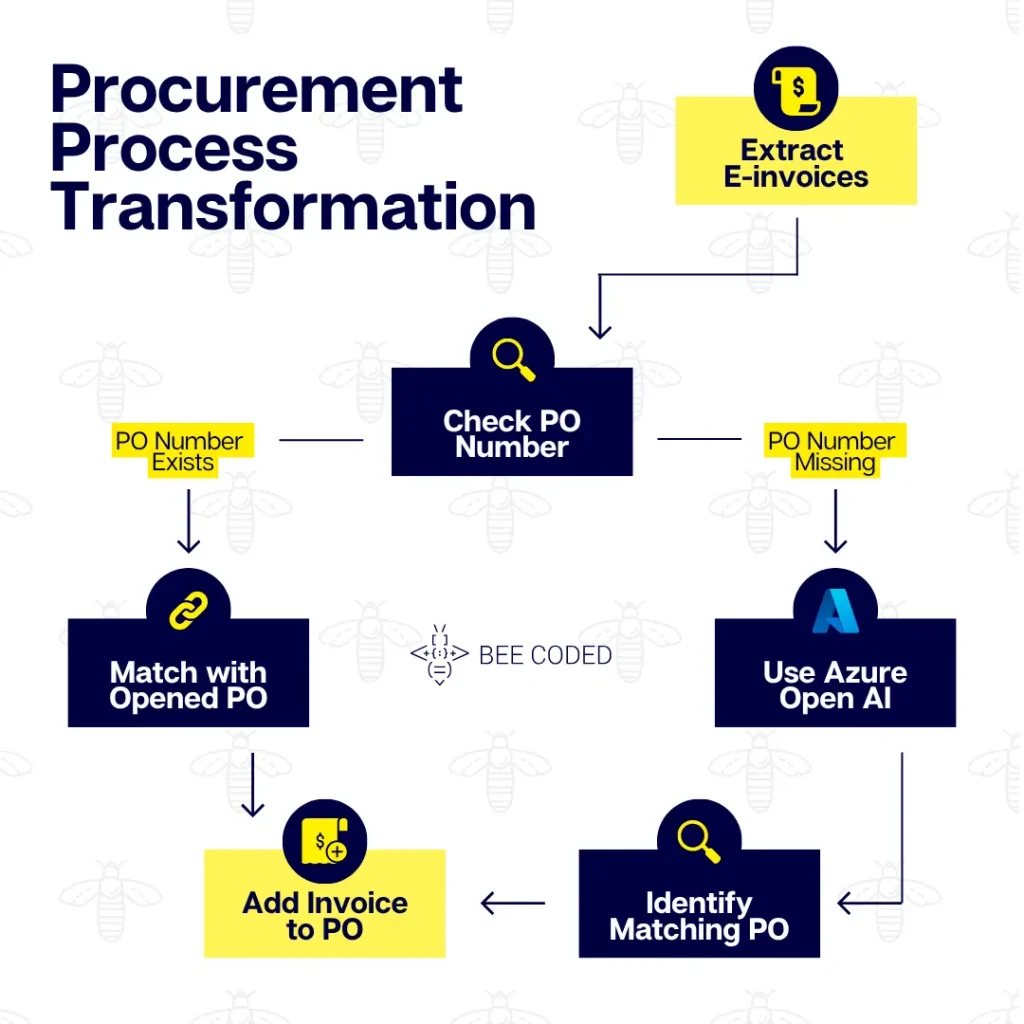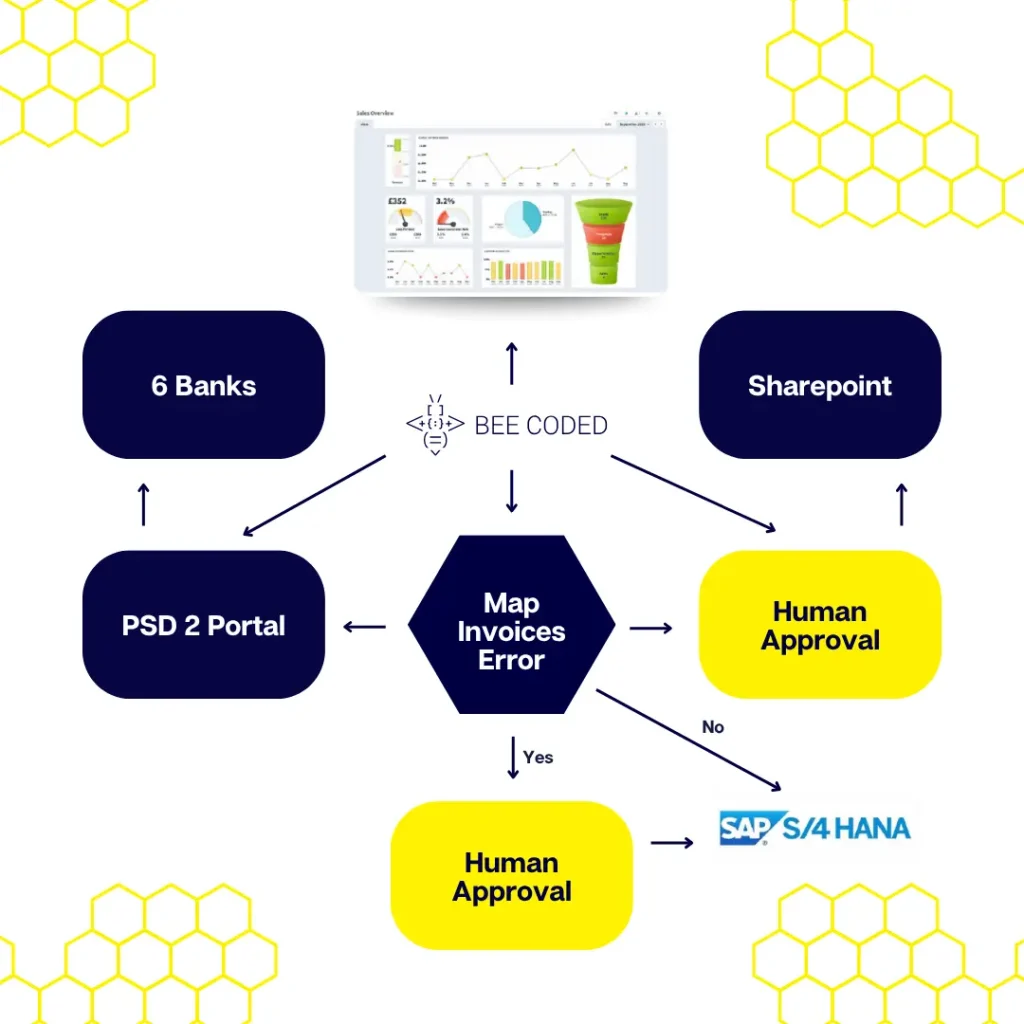- Industry insights
- People in tech
- Product development
- Tech trends at BEECODED
- 12 Aug 2025
Calculate Your Automation ROI: Free Tool Shows Exact Savings
We’ll show you how much you can actually save through automation.



Table of contents
Contributors

Have you decided to automate certain processes in your company but want to see exactly how to calculate your automation ROI so you’ll know from the start what real savings you can expect?
Well, in today’s article, we’ll show you how much you can actually save through automation, with real-life examples from BEE CODED implementations. Plus, we have an ROI calculator, so you can make a personalized estimate based on your company’s specific situation.
Let’s get started!
How much could your company save through automation?
Companies that implement automation solutions can save between 25% and 50% of their throughput costs (according to automake.io). Simply put, if a process currently costs you $100/month, after automation, that cost could drop to $50–$75/month. Saving half your costs? Now that’s good news!
What do “throughput costs” actually mean?
They’re all the money invested to complete a process:
- Employee wages for time spent on the task
- Corrections due to human error (e.g. wrong invoices)
- Time lost on repetitive activities (e.g. manually filling out forms).
For example, an employee who currently spends 4 hours/day processing invoices could complete the same work in just 1 hour through automation.
What’s more, according to a study by Deloitte (via monitask.com), the average ROI for RPA (Robotic Process Automation) projects is around 200% in the first year.
Although 200% already sounds convincing, let’s imagine a concrete example. Let’s say you invest $10,000 in automation — with a 200% ROI, that means you gain $30,000 in value.
Sounds good, right?
Why is Automation ROI calculated over one year?
Most ROI (Return on Investment) calculations are done over a one-year period. That’s because automation typically involves an upfront cost followed by recurring benefits. One year is a long enough timeframe to clearly see the impact on both costs and efficiency.
BEE CODED Case Study #1 with Automation ROI
Procurement Process Transformation
- Challenge: The order creation process was time-consuming and required constant human intervention.
- Solution: End-to-end automation of orders, invoices and reconciliation.
- Results:
– $200,000/year saved in personnel costs
– Over 2,000 hours of manual work eliminated
– Implementation time: just 2 weeks

BEE CODED Case Study #2 with Automation ROI
Banking Operations Streamlined
- Challenge: Manual processing of bank statements from multiple institutions led to frequent errors.
- Solution: Automatic integration with six banks and automated reconciliation.
- Results:
– $100,000 saved in personnel and infrastructure costs
– Legacy, inefficient systems eliminated- Implementation delivered in 3 weeks

Automation ROI Formula
To calculate automation ROI, we use the formula:
ROI = (Total Benefits – Total Costs) / Total Costs x 100
What each component means:
- Benefits – How much you save annually through automation (e.g. salaries, errors, time).
- Costs – Your total investment in the automation solution (e.g. software licenses, implementation etc).
- ROI is expressed as a percentage: how much you gained vs. how much you invested.
For example, if you save $30,000/year and invested $10,000:
ROI = (30,000 – 10,000) / 10,000 x 100 = 200%
How to calculate your automation ROI?
Alright, let’s get to it. Here’s what you need to know when calculating automation ROI:
1) What process do you want to automate?
First things first, what are we automating? Invoicing, employee onboarding, etc.
This is important because every process has a different level of complexity and cost impact.
2) Current hours spent by people in the process
How many hours per month do people spend on this task? The more hours, the greater the potential savings.
3) How many people are involved in the process each month?
Automating a repetitive process handled by 10 people is more valuable than one done by just a single person.
4) What is your company’s annual revenue?
Revenue helps put the investment and savings into context. You can then prioritize the processes that have the biggest impact.
5) Fill out the form and find out your ROI based on your input.
BEE CODED Automation ROI Form
Use the BEE CODED form to get a personalized estimate of the automation ROI for your company.
After you complete the form with your information, our team will review your input carefully.
We will get back to you with a detailed personalized analysis of your automation ROI via email.
Conclusion
If you’ve read this far, you’re clearly serious about cutting costs and digitizing your internal processes.
Keep in mind that automation is a competitive advantage for your company, helping you work faster and smarter.
Check out BEE CODED’s Business Process Automation services and let’s partner up!
Free Automation Discovery: Find $200K+ in Hidden Savings
BEE CODED’s Automation Platform: On-Premise AI Agents That Work From Your Office
Ethical Challenges in Building AI-Driven SaaS Products in 2025